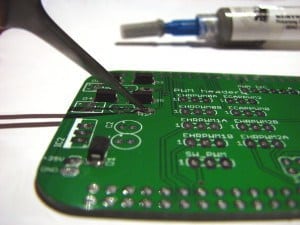 You don’t need fancy equipment to do SMD soldering at home. You can easily do it using a soldering iron.
You don’t need fancy equipment to do SMD soldering at home. You can easily do it using a soldering iron.
SMD stands for Surface Mount Device and they are components that you solder on the surface of a circuit board.
Let me guide you through how to do SMD soldering with a soldering iron.
(The most common method to solder these components is using an oven. Also called SMD Reflow Soldering)
SMD stands for Surface Mount Device and indicates that the component is mounted on the surface of the circuit board in contrast to through-hole components which are mounted in holes.
These are the soldering tools you should have in order to solder surface mount components:
- Soldering iron (use a thin tip if you have)
- Solder
- Solder flux (useful, but not necessary)
- Tweezers
- Microscope or a loupe
How to solder a surface mount resistor
Soldering a resistor is the simplest way to start learning SMD soldering.
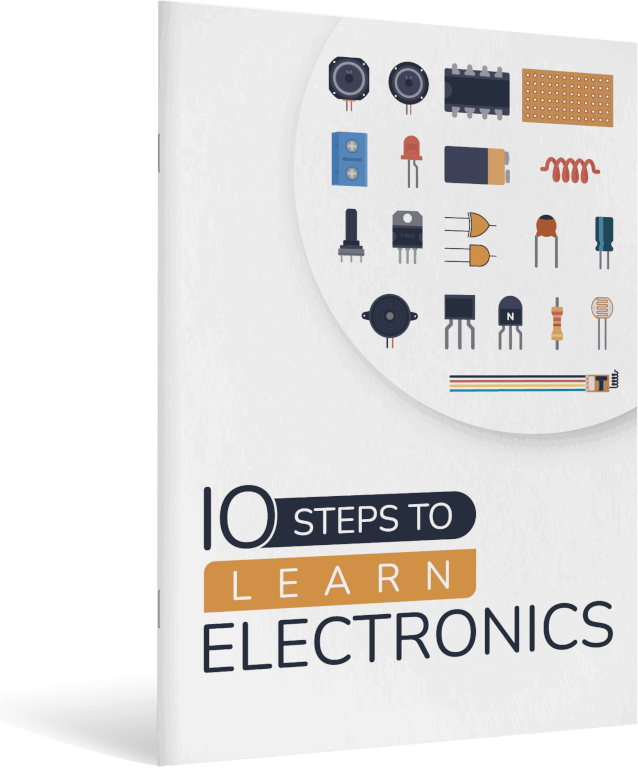
10 Simple Steps to Learn Electronics
Electronics is easy when you know what to focus on and what to ignore. Learn what "the basics" really is and how to learn it fast.
Start by applying flux to one pad on the circuit board. The flux cleans the pad and makes it easier for the solder to fasten properly.
Apply some solder to the tip of your iron and touch the circuit board pad with the tip so that some of the solder passes on to the pad.
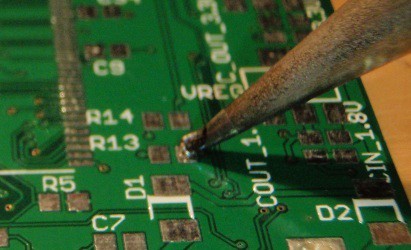
Place the resistor in its place an hold it there with a pair of tweezers while you touch the soldering tip so that it heats both the component and circuit board pad.
The resistor should now be fastened on one side. Apply solder to the soldering tip again and touch the iron tip on the other side.
Your resistor should now be good to go, but you might want to inspect the solder joints with your microscope or loupe to make sure the connection is good.
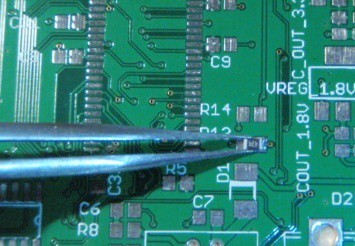
How to solder surface mount chips
The method to solder a surface mount chip is very similar to the method for soldering a resistor.
Start by applying flux on all the pads on the circuit board.
Apply some solder to one of the chip’s corner pads.
Place and align the chip using tweezers.
Hold the chip in place while touching the corner pad with the tip of the soldering iron so that the solder melts the pin and the pad together.
Check the alignment of the chip. If it is not in its place, use your soldering iron to loosen the pin chip and align the chip properly.
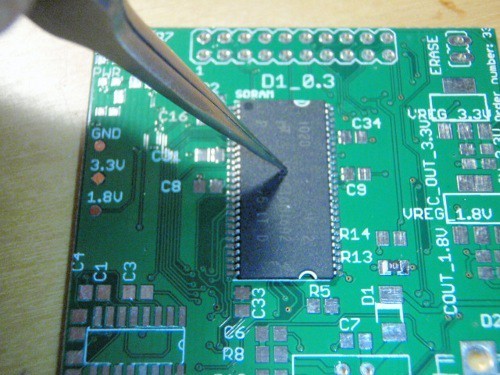
Continue soldering on the opposite corner by putting a bit of solder on the soldering iron tip then touching the circuit board pad and pin at the same time. Do this for all the pins of the chip, one by one.
After all the pins have been soldered you should inspect the solder joints carefully with a microscope or loupe to check for bad joints or solder bridges.
Alternative methods
There are a few alternative methods of SMD soldering. Below, I will explain two methods that I use.
Using solder paste
Start by applying flux to the circuit board pads. Then apply solder paste on the all the pads of the component you want to solder.
Using tweezers, place the component in its correct position and hold it there. Place the tip of the soldering iron onto each of the pads so that the solder melts and makes good connections between the component and the board.
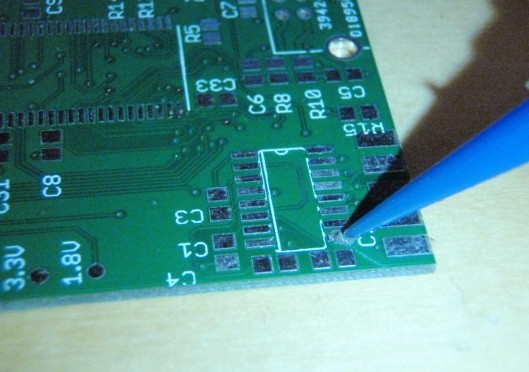
Flood with solder
This method is for soldering chips.
As usual start by applying flux to the pads on the circuit board. Fasten one of the corner pins of the chip to its pad by using a bit of solder. Make sure the chip is properly aligned on the pads.
Now use your soldering iron and flood the pins with solder so that all the pins are connected. On the picture below, only a few pins are flooded, but the idea is to flood all the pins.
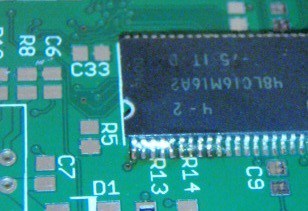
Then start on one end and heat a pin so that the solder melts on the next 2-3 pins. Use a solder sucker to suck up excess solder.
Continue down the row and heat 2-3 pins at once while you suck the solder away. After all the excess solder has been removed, check for solder bridges with a microscope.

An SMD soldering method not covered here is the reflow oven.
This is the most common soldering method in the professional world.
Return from SMD Soldering to How To Solder
More Soldering Tutorials

10 Simple Steps to Learn Electronics
Electronics is easy when you know what to focus on and what to ignore. Learn what "the basics" really is and how to learn it fast.
